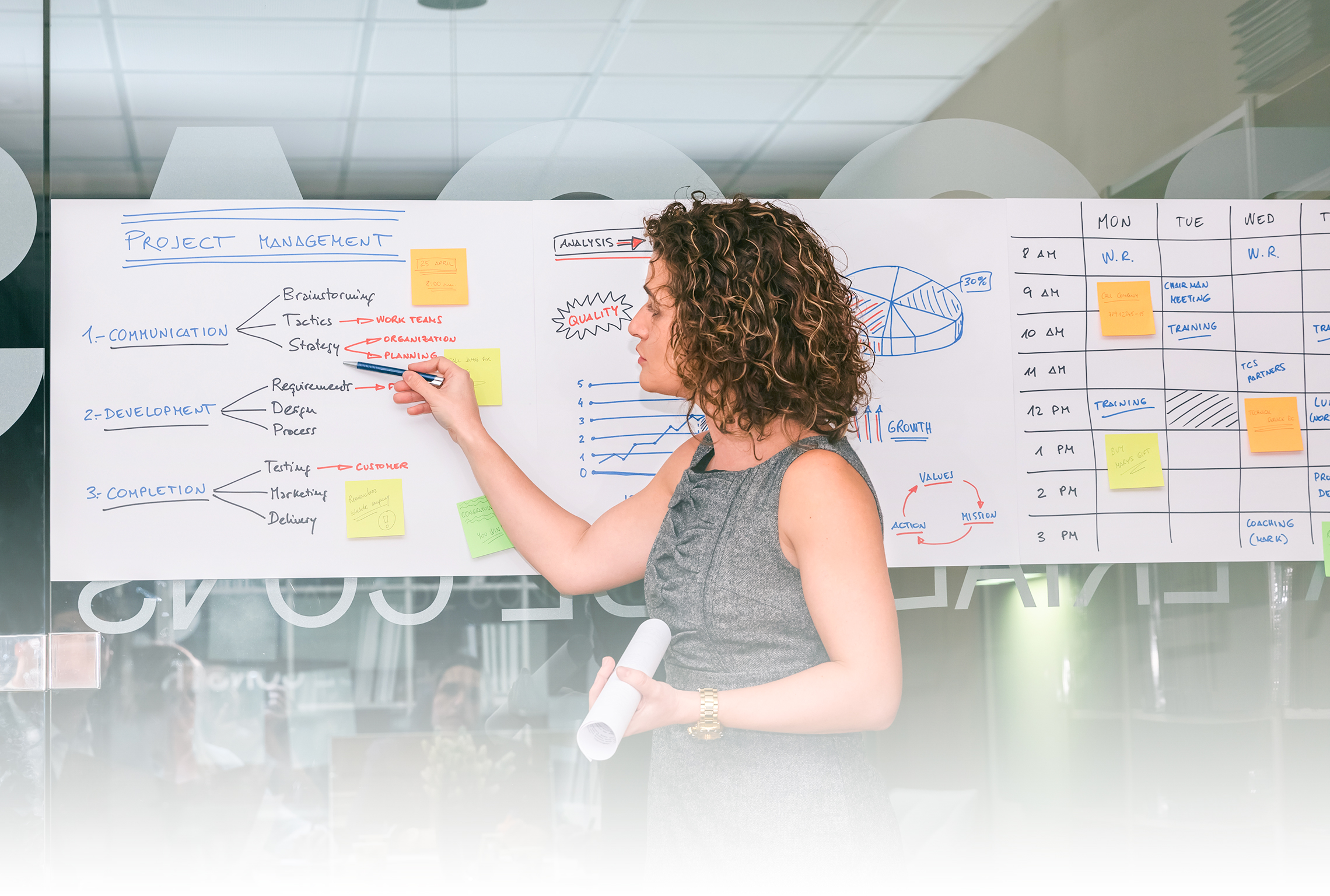Maximizing Success with the Full Project Lifecycle
Unlocking Achievement: Navigating the Full Project Lifecycle for Optimal Success
Project Management
December 7, 2023
11 minutes read

“”
The use of a project lifecycle helps ensure systematic planning, execution, and completion of projects.
What is a full project lifecycle?
A full project lifecycle refers to the series of phases or stages that a project goes through from its initiation to its completion. The specific stages can vary. They are dependent on the project management methodology used, but the most common framework includes five overall stages.
These stages collectively form a cyclical process where feedback from one phase informs and influences the subsequent phases. Effective project management involves careful planning, execution, and monitoring throughout the entire lifecycle. This ensures that the project is delivered successfully on time, and within budget.
What are the 5 phases of project management lifecycle?
There are several approaches to project management. Different approaches can have different steps and phases, but the overall rule tends to be the following:
Initiation:
In this phase, the project is defined at a broad level. Key stakeholders are identified, and the project’s objectives, scope, purpose, and feasibility are outlined. The appointment of a project manager and the formation of a project team often occur during this stage.
Planning:
The planning phase involves developing a detailed project plan. This includes outlining the project scope, schedule, budget, resources, and potential risks. Tasks, dependencies, and milestones are defined, providing a roadmap for the project’s execution.
Execution:
During the execution phase, the project plan is put into motion. Resources and tasks are coordinated, and project work is carried out. Effective communication and collaboration among team members are crucial at this stage to ensure that the project progresses according to the plan.
Monitoring and Controlling:
This phase involves tracking and measuring project performance and progress. Changes to the project scope, schedule, and costs are managed, and corrective actions are taken as needed. The goal is to ensure that the project aligns with its objectives. This way, any deviations from the plan are addressed promptly.
Closing:
The closing phase marks the completion of the project. All project deliverables are finalized, and formal acceptance is obtained from stakeholders. Resources are released, and a project review is conducted to document lessons learned. The closing phase ensures that the project concludes in an organized and controlled manner.
The benefits of implementing full project lifecycle
Implementing a full project lifecycle contributes to successful project delivery by providing structure, promoting effective communication, managing risks, and facilitating continuous improvement. It ensures that projects are well-planned, well-executed, and well-closed, leading to increased efficiency and client satisfaction.
Clear Direction and Purpose:
The initiation phase helps define the project’s objectives, scope, and purpose, providing a clear direction for the entire team.
Thorough Planning:
The planning phase allows for a detailed roadmap, covering aspects such as scope, schedule, budget, and resources, contributing to effective project management.
Risk Management:
The lifecycle enables proactive identification, assessment, and management of risks, reducing the likelihood of issues impacting the project.
Resource Optimization:
Detailed planning and allocation of resources throughout the lifecycle ensure efficient resource utilization, minimizing waste and improving productivity.
Effective Communication:
Clear communication is facilitated by the structured phases, helping manage stakeholder expectations and ensuring that everyone is informed about project objectives and progress.
Quality Assurance:
Incorporating quality checks at various stages ensures that project deliverables meet the required standards, reducing the likelihood of defects and rework.
Change Management:
The lifecycle provides mechanisms to assess and manage changes, ensuring that alterations to project scope, schedule, or budget are carefully evaluated and implemented.
Progress Tracking and Control:
Monitoring and controlling phases allow for real-time tracking of project progress, enabling timely intervention and corrective actions to keep the project on course.
Client Satisfaction:
Adhering to the project lifecycle contributes to meeting or exceeding client expectations through clear communication, adherence to timelines, and the delivery of high-quality outputs.
Continuous Improvement:
The closing phase involves a project review and documentation of lessons learned, providing valuable insights for continuous improvement in project management practices.
Legal and Regulatory Compliance:
Following a structured project lifecycle helps ensure that projects comply with legal and regulatory requirements, reducing the risk of legal issues.
Efficient Project Closure:
The closing phase ensures a systematic and organized conclusion to the project, with formal acceptance from stakeholders and the release of resources.
Enhanced Team Collaboration:
The structured phases promote collaboration among team members, fostering a cohesive working environment and improving overall project performance.
Predictable Outcomes:
The full project lifecycle enhances predictability by providing a framework that helps anticipate challenges, plan for contingencies, and achieve successful project outcomes.
What are some examples of project management methodologies that use a project lifecycle?
There are several methodologies that provide frameworks and approaches for managing projects effectively. The use of a project lifecycle helps ensure systematic planning, execution, and completion of projects. The choice of methodology often depends on the project’s nature, goals, and organizational preferences. Depending on the methodologies, there might also be a difference in project management tools.
Waterfall Methodology:
The waterfall methodology follows a linear and sequential approach. It divides the project into distinct phases, such as initiation, planning, execution, monitoring, and closing. Each phase must be completed before moving on to the next.
Agile Methodology:
Agile is an iterative and incremental approach to project management. It emphasizes flexibility and collaboration, with projects divided into small, functional increments. Each iteration typically includes planning, execution, and review cycles.
Scrum:
Scrum is an Agile framework that organizes work into fixed-length iterations called sprints. Each sprint follows a mini-lifecycle with planning, daily stand-ups, execution, review, and retrospective phases.
Kanban:
Kanban is a visual management method that uses a board to represent the project workflow. Work items move through stages, and the methodology emphasizes continuous improvement. While not as strictly phased as some other methodologies, it still follows a lifecycle of sorts.
PRINCE2 (Projects IN Controlled Environments):
PRINCE2 is a structured project management methodology that divides projects into a series of manageable stages, including initiation, planning, execution, monitoring, and closing. It provides a framework with clearly defined roles and responsibilities.
Critical Path Method (CPM):
CPM is a project management technique that focuses on identifying the critical path — the sequence of stages determining the minimum time needed for the project. It involves activities such as defining tasks, estimating durations, and sequencing tasks.
Six Sigma:
Six Sigma is a methodology that aims to improve process efficiency and eliminate defects. It uses the DMAIC (Define, Measure, Analyze, Improve, Control) lifecycle for project management to achieve continuous improvement.
Extreme Programming (XP):
XP is an Agile methodology that emphasizes customer satisfaction and responsiveness to changing requirements. It follows a cyclical project lifecycle, with phases like planning, designing, coding, testing, and releasing in short iterations.
Lean Project Management:
Lean project management focuses on eliminating waste and optimizing efficiency. It often involves continuous improvement and follows a project lifecycle that includes planning, execution, monitoring, and refining.
Incremental Model:
The incremental model involves building and delivering the project in increments or iterations. Each increment represents a portion of the final product, and the project progresses through repeated cycles.
Future trends in project management
The dynamic nature of project management is representative of the need for professionals to stay adaptable, embrace new technologies, and continually enhance their skill sets to navigate the evolving landscape effectively. Digital transformation drives all industries in this day and age, and project management is no exception.
Digital Transformation:
Increasing reliance on digital tools and technologies, including project management software, AI, machine learning, and automation, to streamline processes, enhance collaboration, and improve overall project efficiency.
Remote and Hybrid Work Environments:
Continued integration of remote and hybrid work models, requiring project managers to adapt their approaches to manage distributed teams effectively and leverage virtual collaboration tools.
Agile and Hybrid Methodologies:
Growing adoption of Agile methodologies beyond software development, with hybrid approaches that combine elements of Agile and traditional project management to enhance flexibility and responsiveness.
Data-Driven Decision-Making:
Utilization of data analytics and business intelligence to make informed decisions, predict project outcomes, and identify areas for improvement, contributing to more data-driven project management.
Focus on Soft Skills:
Recognition of the importance of soft skills, such as emotional intelligence, communication, and leadership, as critical components of effective project management, especially in complex and diverse team environments.
Sustainability Integration:
Increasing emphasis on incorporating sustainable practices into project management, considering environmental and social impacts, and integrating sustainability goals into project objectives.
Project Management Office (PMO) Evolution:
Evolution of PMOs to become more strategic partners in organizational success, focusing on portfolio management, strategic alignment, and providing value-added services beyond traditional project oversight.
Resilience and Risk Management:
Heightened emphasis on building resilience into project management practices, including robust risk management strategies to anticipate and address potential disruptions, whether they be related to global events, supply chain issues, or technology failures.
Blockchain for Project Management:
Exploration of blockchain technology for enhancing transparency, traceability, and security in project management, particularly in areas like supply chain management, smart contracts, and project financing.
Customer-Centric Project Management:
Shift towards more customer-centric project management approaches, ensuring that projects align with customer needs and expectations, with a focus on delivering value and fostering long-term relationships.
Continuous Learning and Development:
Recognition of the importance of ongoing learning and development for project management professionals, with an emphasis on acquiring new skills, staying updated on industry trends, and adapting to evolving project management methodologies.
Integration of ESG (Environmental, Social, Governance) Criteria:
Consideration of ESG criteria in project planning and execution, aligning projects with environmental and social responsibility standards, and ensuring ethical governance practices.
Adoption of Predictive Analytics:
Increased use of predictive analytics to forecast project outcomes, identify potential issues, and optimize resource allocation, enabling more proactive decision-making throughout the project lifecycle.







